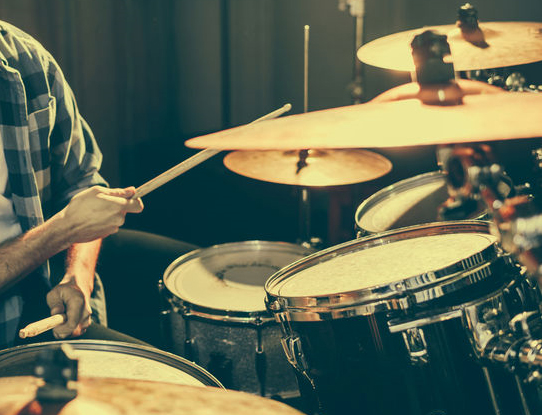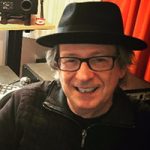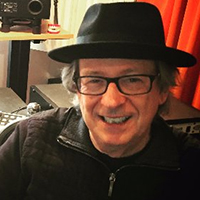The origin of the “Daryl Hall and John Oates” album, which came to be known as the “Silver Album” because of its silver metallic cover, got its start in the mid-1970s on a Monday morning at Larrabee Sound in West Hollywood, CA.
From the very first time I met Daryl and John when they walked into the control room, I was impressed by how together — how in sync and “present” — they were. I remember the proclamation Oates made on that first day of rhythm tracking: “We are cutting the album’s first single today.”
They already knew, without even cutting a demo, that the song “Camellia” was going to be the first single before it was even recorded. Up until then, my experience with most recording artists was quite the opposite. Most of the time they were scattered, temperamental and tended toward the mercurial.
But throughout this H&O project, the planning and pre-production were clearly evident. All the songs were written with very specific and concrete ideas for each song’s production style and sonics.
H&O’s manager, Tommy Mottola, secured the album’s producer, Chris Bond, who was charged with two main tasks. First was writing out very specific arrangements with each musician’s part exactly notated. On some songs, the drummer’s part had every hit on every kit piece written out.
Second, he was to guide the performances of a carefully selected crew of L.A.‘s finest studio musicians who, along with Daryl and John, played and sang on the tracking sessions.
This kind of “preparedness” coming from both the producer and the artist is a blessing for the recording engineer. Session “cats” play very well and their instruments always sound great. And it raises the bar with the pressure to come up with exemplary sounding recordings — there will be many very critical ears listening to playbacks,
It was immediately obvious that both the artists and producer knew exactly what they wanted musically and what it was supposed to sound like. I had to pull out all the stops. Rather than just using “tried and true”, safe microphone choices, typical tracking processing, and studio setups that work 99 percent of the time with most artists and producers, I wanted to stretch out and explore — try alternative ideas and concepts using different, non-typical methods and without employing the usual tools.
Enter The $300 Drum Sound…
One concept I came up with about midway through the project was the $300 Drum Sound. The producer had talked about how he liked the simple and present drum sound of old Al Green and Ann Peebles records. We loved everything about the records produced by Willie Mitchell.
The drum sound on those records was in sharp contrast to the then-current studio drum sound “du jour” — a super high-fidelity drum sound recorded very precisely using a certain combination of dynamic and condenser mics. So I decided to go the other way and use only Shure SM57s on the entire kit: SM57s for the snare, kick, hi-hat and overheads, and, if there were toms, well it was — you guess it –more 57s.
Hence the name “The $300 Drum Sound,” which was about the cost of all those 57s at that time. I think I used every one in Larrabee’s mic locker and then some.
I employed this approach on just one song — “Sara Smile”. Daryl wrote and sang this one for the love of his life, Sandy Allen; it was the third single for that album.
It was a truly magical recording, although we didn’t realize it at the time, recorded in a couple of takes, with Daryl’s live lead vocal used in the final mix with the exception of punching in and replacing the first “Sara” at the top of the first chorus.
We liked the “glamour” of the strings and the soulfulness of the vocal and harmonies, but wanted the percussive edginess of a loud, dry kit and the overdubbed percussion bits to balance it out — keeping it classy but not too slick and polished sounding.
The drums are mixed incredibly loud on that song, and the whole time during the mix, we were concerned that they we were too loud. As luck would have it, even a “screwed up” and loud drum mix couldn’t keep that song from being a wonderful hit record.
No Expense Spared…
Drummer Ed Green had his drums set up under a sound deadening, umbrella-like canopy that hung down from the ceiling in Larrabee’s Studio A. This approximately six by six-foot pyramid-shaped “roof” had an interior tiled with burlap-covered panels of fiberglass and was hung by wires about seven feet above the floor, just enough space to the get drum overhead mics under it and placed over the kit.
Underneath the canopy, Green’s drums were surrounded by chest-high wooden gobos that featured horizontal slots that trapped mostly sound in the middle frequencies using a maze of internal, free-hanging fiberglass slats. The purpose of this sonically controlled area was to emphasize the low frequencies, control the cymbal brightness and prevent the drums’ sound from leaking very much out into the room.
The musicians loved the drums in this area because, unlike using a drum booth (which were starting to become popular in other studios at the time), they didn’t feel separated from the drummer. You could hear the drums in the rest of the room, but they were greatly subdued in volume.
Under these conditions, the acoustic sound of Ed’s kit was very dry with very little room ambiance. I used no room mics — they were not yet deployed much in those days, and besides, we had to conserve tracks. The whole album was recorded using a 16-track, 2-inch analog tape recorder.
The SM57s, with their built-in compressed mid-range sound, enhanced the drum sound already made acoustically in that space. The studio’s Spectrasonics console had limited EQ — only high- and low-frequency — and there were few compressors available. I don’t remember using any EQ or compression.
The drums ended up sounding super dry with no room tone ,and very tonal and compressed. Overall there weren’t a lot of super high or low frequencies in the sound, which was perfect for what we wanted. The drums were loud, thick and super warm but not too bright, brash or boomy. They worked in the mix in a more organic way.
After the album came out and “Sara Smile” was playing all the time on the radio, the producer started getting letters from engineers and producers all over the world asking how we got that drum sound. What mics did we use?
If only they knew…




















